Maximizing Compliance & Risk Management: Expert Strategies

Compliance And Risk Management
In the dynamic landscape of today's business world, the concepts of compliance and risk management stand as twin pillars, ensuring organizations navigate the complex web of regulations and uncertainties with confidence and strategic foresight. These domains, though distinct, are intrinsically intertwined, playing a critical role in safeguarding an organization's reputation, financial health, and operational integrity. This article delves into the essence of compliance and risk management, exploring their significance, methodologies, and the symbiotic relationship that binds them in the pursuit of organizational excellence.
What Is Compliance Management?
Compliance management is the structured framework within which an organization adheres to legal standards, industry regulations, and internal policies. It is a proactive process, designed to prevent legal and regulatory pitfalls, promote ethical conduct, and maintain an organization's integrity in the face of ever-evolving external and internal standards.
At its core, compliance management involves identifying the relevant regulations that impact various facets of an organization's operations, from employee conduct to data protection, environmental standards, and financial reporting. It requires a thorough understanding of these regulations, the implementation of policies and procedures to align with them, and the continuous monitoring and auditing of these practices to ensure ongoing adherence.
Effective compliance management serves multiple purposes. It safeguards the organization from legal issues, fines, and reputational damage. It also instills a culture of transparency and ethics, enhancing stakeholder trust and confidence. By systematically addressing compliance, organizations can also uncover operational inefficiencies and opportunities for improvement, driving better business outcomes.
What Is Risk Management?
Risk management, on the other hand, is the systematic process of identifying, assessing, and responding to potential risks that could adversely affect an organization's capital and earnings. These risks can originate from various sources, such as financial uncertainties, strategic management errors, accidents, natural disasters, and technological failures.
The essence of risk management lies in its proactive approach—identifying potential risks before they materialize, evaluating their likelihood and potential impact, and implementing strategies to mitigate, transfer, accept, or avoid them. This process involves continuous risk assessment, developing strategies to manage identified risks, and monitoring the effectiveness of these strategies in reducing or eliminating risk.
Risk management is crucial for several reasons. It enables organizations to make informed decisions, balancing risk and reward. By anticipating and addressing risks, companies can protect their assets, ensure business continuity, and maintain their reputation and stakeholder trust. Moreover, effective risk management can lead to cost savings by avoiding losses and maximizing resource efficiency.
Compliance And Risk Management Framework
The compliance and risk management framework is a structured approach that organizations employ to systematically identify, evaluate, and manage compliance obligations and risks. This framework is essential for organizations to thrive in a complex regulatory landscape and uncertain environment. It not only helps in ensuring legal and regulatory adherence but also in identifying and mitigating potential risks that could impact the organization's objectives and performance.
Understanding The Compliance And Risk Management Framework
At its core, the compliance and risk management framework is designed to provide a comprehensive methodology for organizations to manage both compliance and risk in a synchronized manner. This framework is built on the premise that risk and compliance are interrelated aspects that should be managed with a unified strategy. It encompasses various processes, tools, and systems that an organization uses to ensure it is aware of and takes steps to comply with relevant laws, policies, standards, and regulations while simultaneously managing the myriad risks it faces.
The framework is dynamic, adaptable to the organization's changing environment, size, and complexity. It is not a one-size-fits-all model but rather a set of principles and processes tailored to the specific needs and context of the organization. It provides a blueprint for identifying compliance requirements and risks, assessing their significance, implementing controls to manage them, and continuously monitoring and reviewing the effectiveness of these controls.
Components And Elements Of An Effective Compliance And Risk Management Framework
An effective compliance and risk management framework includes several key components:
- Governance and Culture: The foundation of a strong framework is the commitment from top management, fostering a culture that emphasizes the importance of compliance and risk management throughout the organization.
- Risk Identification and Assessment: Systematic identification and evaluation of risks to determine their potential impact on the organization.
- Compliance Requirements Identification: Identifying applicable laws, regulations, and standards and ensuring that the organization understands its compliance obligations.
- Control Measures: Implementing policies, procedures, and controls to manage identified risks and ensure compliance with legal and regulatory requirements.
- Communication and Training: Ensuring that employees are aware of and understand their role in compliance and risk management through effective communication and training programs.
- Monitoring and Reporting: Regularly reviewing and monitoring the effectiveness of compliance and risk management processes and reporting on this to relevant stakeholders.
- Continuous Improvement: Using insights gained from monitoring and reviews to continuously improve the compliance and risk management framework.
Integration Of Compliance And Risk Management Into Organizational Processes
Integrating compliance and risk management into organizational processes is pivotal for creating a proactive, responsive, and resilient organization. This integration ensures that compliance and risk management are not siloed activities but are embedded in the fabric of the organization's operations and strategic decision-making processes.
To achieve this integration, organizations should:
- Align compliance and risk management objectives with the overall business strategy.
- Ensure that decision-making processes at all levels of the organization consider compliance requirements and risk implications.
- Embed compliance and risk management responsibilities into the roles and responsibilities of all employees, not just those in specialized compliance or risk functions.
- Utilize technology and systems to streamline compliance and risk management processes, ensuring that they are part of the daily workflow.
- Foster an organizational culture where employees are encouraged to communicate potential compliance and risk issues and are supported in managing these proactively.
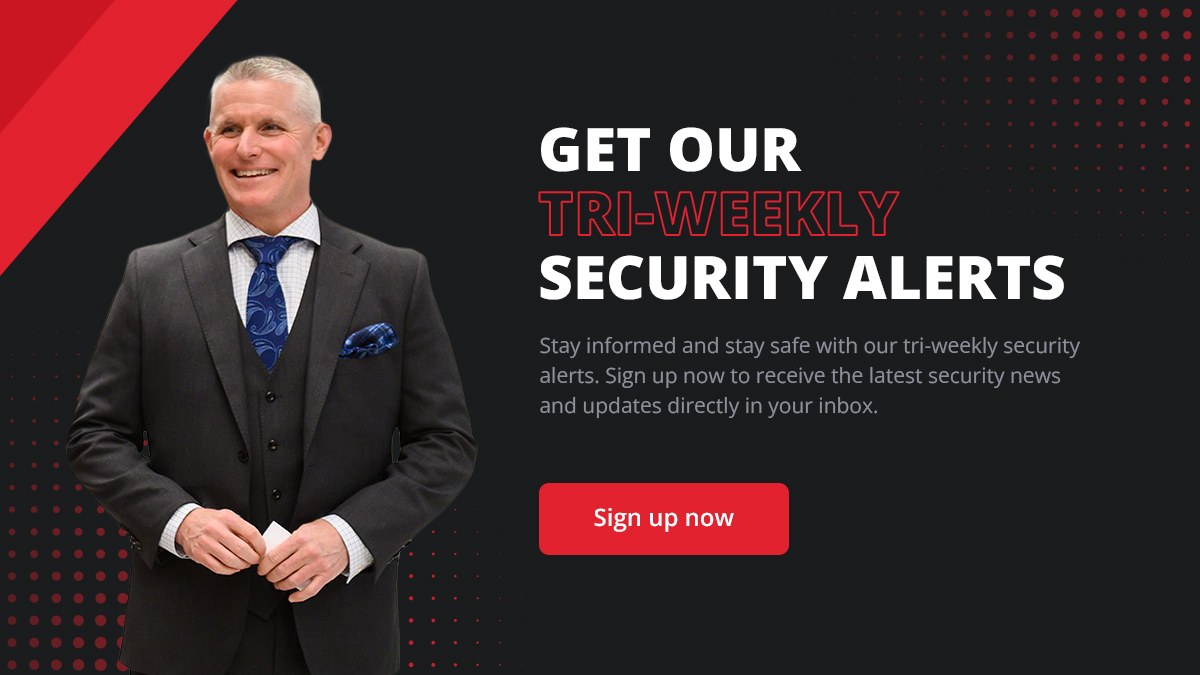
What Is The Difference Between Compliance And Risk Management?
In the realm of organizational governance, understanding the distinction between compliance and risk management is paramount. While both are essential in steering companies toward success and integrity, they address different aspects of the organizational framework. This section elucidates the differences, interrelations, and key principles underpinning compliance and risk management.
Definition And Importance Of Compliance And Risk Management
Compliance management is the practice of aligning organizational activities with the relevant laws, regulations, standards, and ethical norms. It's about adhering to external mandates and internal policies to prevent legal and reputational risks. The importance of compliance management cannot be overstated—it ensures an organization's legitimacy, upholds its ethical standards, and fosters a culture of accountability and transparency.
Risk management, conversely, involves identifying, assessing, and mitigating the risks that could impede an organization's objectives. It's a broader, more dynamic field that encompasses a variety of uncertainties beyond regulatory compliance. Effective risk management is crucial for the resilience and adaptability of an organization, enabling it to anticipate and prepare for potential threats, thus safeguarding its assets and ensuring its sustainability.
Relationship Between Compliance And Risk Management
Although distinct, compliance and risk management are interconnected. Compliance is a subset of risk management—non-compliance is a significant risk that organizations must manage. Conversely, risk management's scope includes a variety of risks, of which legal and regulatory risks are just a part.
The relationship is synergistic. A robust risk management framework can identify compliance as a key risk area, integrating strategies to ensure adherence to laws and regulations. Similarly, effective compliance management can contribute to a comprehensive risk management approach by mitigating the risk of legal penalties, financial losses, and reputational damage.
Overview Of Key Concepts And Principles
The key concepts in compliance management include legal adherence, ethical integrity, transparency, and accountability. It involves understanding applicable regulations, implementing policies to meet these regulations, training employees, and regularly auditing compliance processes.
In risk management, the key concepts are risk identification, risk assessment, risk mitigation, and monitoring. It's about understanding the full spectrum of potential risks (strategic, operational, financial, compliance-related, etc.), assessing their likelihood and impact, and developing strategies to address them.
Principally, both disciplines advocate for a proactive, systematic approach to managing organizational challenges. They emphasize the need for ongoing monitoring, continuous improvement, and integration into the organization's culture and processes. Understanding these principles is crucial for anyone looking to grasp the nuances of organizational governance and the pivotal roles of compliance and risk management within it.
Differences Between Compliance And Risk Management
While compliance and risk management are both essential to organizational success, they address different aspects of the business landscape. Distinguishing between the two can empower organizations to allocate resources effectively, enhance decision-making, and fortify their operational resilience.
Reactive Vs. Proactive
Compliance management is inherently reactive. It focuses on adhering to established laws, regulations, and standards. Organizations must stay abreast of regulatory changes and swiftly adapt to maintain compliance. This reactive nature is pivotal in ensuring that businesses do not inadvertently breach legal or regulatory boundaries, which could lead to financial penalties, reputational damage, or operational disruptions.
In contrast, risk management is predominantly proactive. It involves anticipating potential future risks and implementing strategies to mitigate them before they impact the organization. This forward-thinking approach allows businesses to prepare for uncertainties, making strategic decisions that account for various risk scenarios. By foreseeing and addressing risks proactively, organizations can safeguard their assets, reputation, and stakeholders' interests.
Tactical Vs. Strategic
Compliance management is tactical. It involves specific actions and policies that align with regulatory requirements and internal standards. These actions are often detailed, focusing on particular aspects of the organization's operations, such as financial reporting, data privacy, or employee conduct. The tactical nature of compliance management ensures that all organizational activities are conducted within the bounds of legal and ethical standards.
Risk management, however, is strategic. It requires a broad view of the organization and its environment, identifying potential threats that could affect long-term objectives. Strategic risk management involves making informed decisions that balance risk and reward, aligning risk appetite with business goals. This strategic perspective ensures that the organization is not just avoiding risks but also seizing opportunities that align with its overarching vision and objectives.
Ethics Vs. Crisis Management
Compliance management is closely tied to ethics. It reflects the organization's commitment to operating legally and ethically, adhering to both the letter and the spirit of the law. This commitment to ethical conduct enhances stakeholder trust and reinforces the organization's reputation and integrity.
On the other hand, risk management often intersects with crisis management. While not all risks lead to crises, effective risk management prepares an organization to handle unexpected, adverse events. It involves developing contingency plans, conducting scenario analyses, and establishing communication strategies to manage crises effectively. This preparation helps organizations navigate challenges, minimize damage, and recover more swiftly from setbacks.
Types Of Compliance Risk
In today's complex business environment, understanding and managing compliance risks is crucial for organizations across all industries. Compliance risk, often referred to as integrity risk, arises when businesses fail to comply with laws, regulations, internal policies, or prescribed best practices. These risks can lead to legal penalties, financial forfeiture, and damage to a company's reputation. This article delves into the various types of compliance risks, with a specific focus on corruption, fraud, illegal activities, data, and privacy breaches. By exploring these facets, businesses can develop more robust strategies to mitigate risks and maintain integrity in their operations.
Corruption, Fraud, And Illegal Activity
Corruption, fraud, and illegal activities represent significant compliance risks for businesses. These issues can manifest in various forms, from bribery and embezzlement to money laundering and tax evasion.
Corruption
Corruption involves unethical conduct by a person entrusted with a position of authority, often to acquire personal benefits. It can severely impact businesses, leading to skewed decision-making, unfair competitive advantages, and reputational harm. Anti-corruption laws like the Foreign Corrupt Practices Act (FCPA) in the U.S. and the UK Bribery Act set standards that businesses must adhere to, emphasizing the need for robust compliance programs.
Fraud
Fraud encompasses a wide range of illicit activities, including deceit or concealment to gain an unfair advantage or to avoid an obligation. In the business context, this can include financial fraud, insurance fraud, and securities fraud, among others. The consequences of fraud are far-reaching, affecting not only the financial health of a company but also its credibility and stakeholder trust.
Illegal Activity
Illegal activities in a business context go beyond fraud and corruption, encompassing various forms of non-compliance with applicable laws and regulations. This can include violations of environmental laws, health and safety standards, and labor laws. Engaging in illegal activities not only attracts legal penalties but can also have severe repercussions on an organization's reputation and operational capacity.
Data And Privacy Breaches

In the digital age, data and privacy breaches are among the most prevalent compliance risks facing organizations. These breaches involve unauthorized access to or disclosure of personal information, which can have significant consequences for both individuals and businesses.
A data breach occurs when sensitive, protected, or confidential data is accessed or disclosed without authorization. It can lead to significant financial losses, legal challenges, and erosion of customer trust. Organizations are increasingly subject to stringent data protection regulations, such as the General Data Protection Regulation (GDPR) in the European Union, which mandates strict data handling procedures and imposes hefty fines for non-compliance.
Privacy breaches involve the improper handling of personal information, which can include its unauthorized collection, use, or disclosure. With the rise of digital technologies, maintaining data privacy has become a paramount concern for businesses. Compliance with privacy laws and regulations, such as the California Consumer Privacy Act (CCPA) and GDPR, is crucial for protecting individual rights and avoiding significant penalties.
Workplace Health And Safety
The Imperative of Safeguarding Health and Safety in the Workplace
Workplace health and safety compliance is not just a legal requirement but a cornerstone of ethical business practice and operational excellence. It entails a broad spectrum of considerations, from ensuring physical safety and ergonomics to fostering a culture that prioritizes employee well-being. This section explores the multifaceted nature of workplace health and safety compliance, its significance, and effective strategies for its enforcement.
Key Components and Strategies
- Risk Assessment and Mitigation: Conducting thorough risk assessments to identify potential hazards and implementing strategies to mitigate these risks is fundamental. This includes regular safety audits, employee training, and the establishment of emergency procedures.
- Regulatory Adherence: Compliance with local, national, and international regulations is crucial. This involves staying abreast of changes in legislation and ensuring that all practices are in line with the latest standards.
- Employee Engagement and Training: Empowering employees with the knowledge and resources to maintain a safe working environment is essential. Regular training sessions, open communication channels, and a clear understanding of safety protocols contribute to a culture of safety.
- Monitoring and Continuous Improvement: Ongoing monitoring of health and safety practices and the implementation of continuous improvement measures can significantly enhance compliance and overall safety in the workplace.
Environmental Protection
The Role of Businesses in Environmental Stewardship
Environmental protection compliance is a critical aspect of corporate responsibility, reflecting a company's commitment to sustainable operations and the well-being of the planet. This segment examines the significance of environmental compliance, the challenges businesses face, and practical approaches to aligning business practices with environmental stewardship.
Essential Aspects and Management Approaches
- Regulatory Compliance: Adherence to environmental laws and regulations is a fundamental aspect of compliance. This includes waste management, emissions control, resource conservation, and pollution prevention standards.
- Sustainable Practices: Integrating sustainable practices into business operations can significantly reduce environmental impact. This includes adopting energy-efficient processes, sustainable resource utilization, and waste reduction strategies.
- Impact Assessment and Management: Conducting environmental impact assessments and implementing management plans to mitigate adverse effects is crucial for compliance and sustainability.
- Community Engagement and Transparency: Engaging with communities and maintaining transparency about environmental practices and impacts fosters trust and demonstrates a commitment to environmental responsibility.
Compliance And Risk Management Processes
In the realm of business, effectively managing compliance and risk is not merely a legal obligation but a strategic imperative. Companies that excel in these areas can protect themselves from fines, reputational damage, and operational setbacks, while also gaining a competitive advantage in their industry. This section delves into the critical processes involved in compliance and risk management, highlighting the essential steps organizations must take to identify, define, and assess their compliance risk exposures.
Identify And Define Compliance Risk Exposure
The first step in an effective compliance and risk management process is to identify and define the specific compliance risks an organization faces. This requires a thorough understanding of the regulatory environment, industry standards, and internal policies that apply to the company.
Identifying Risks
The process begins with a comprehensive mapping of all potential compliance risks. This involves reviewing relevant laws, regulations, and industry guidelines, as well as analyzing internal processes, contracts, and past incidents. The goal is to create an exhaustive list of areas where the organization could potentially fall short of legal or regulatory standards.
Defining Risks
Once potential risks are identified, they must be clearly defined and categorized. This involves detailing the nature of each risk, its potential impact, and the likelihood of its occurrence. Defining risks in this manner helps organizations prioritize their management efforts, focusing resources on areas of greatest concern or highest impact.
Compliance And Risk Assessment Process
After identifying and defining compliance risks, organizations must undertake a rigorous assessment process to evaluate their exposure and develop appropriate management strategies.
Risk Assessment
The risk assessment process involves analyzing the identified risks in terms of their potential severity and the organization's current level of preparedness. This step often employs qualitative and quantitative methods to gauge the likelihood of risk occurrence and its potential impact on the organization. Factors such as existing controls, past incidents, and industry trends are taken into consideration to provide a comprehensive risk profile.
Compliance Assessment
In conjunction with risk assessment, a compliance assessment evaluates the organization's adherence to applicable laws, regulations, and internal policies. This involves reviewing documentation, processes, and controls to ensure they align with compliance requirements. It also includes assessing the effectiveness of the organization's compliance training programs and the awareness and understanding of compliance obligations among employees.
Developing Management Strategies
Based on the findings from the risk and compliance assessments, organizations must develop targeted management strategies to address identified risks. This includes implementing or enhancing controls, policies, and procedures; providing targeted training and awareness programs; and establishing mechanisms for ongoing monitoring and reporting.
Compliance Program Establishment And Implementation
Establishing and implementing a comprehensive compliance program is a critical step for organizations to manage and mitigate their compliance risks effectively. A well-structured compliance program not only helps in adhering to legal and regulatory requirements but also fosters a culture of integrity and ethical behavior within the organization.
Establishing a Compliance Program
The establishment of a compliance program begins with the commitment from top management, ensuring that compliance is a key component of the organization's strategic objectives. This commitment is crucial for allocating the necessary resources and for fostering a culture of compliance throughout the organization. The program should be tailored to the specific risks and needs of the business, taking into account its industry, size, and geographic footprint.
Implementing the Compliance Program
Implementation involves translating the compliance program's policies and procedures into action. This includes developing clear guidelines and training programs to ensure that all employees understand their compliance responsibilities. Effective communication is critical, as is the integration of compliance practices into daily business operations. Additionally, the implementation phase should establish clear reporting lines and mechanisms for employees to report potential compliance issues without fear of retaliation.
Monitoring And Tracking Compliance And Risk
Ongoing monitoring and tracking are pivotal to the success of a compliance program. These processes enable organizations to detect compliance gaps and emerging risks promptly, allowing for timely interventions to mitigate risks and prevent non-compliance.
Monitoring involves regular reviews and audits to ensure that compliance policies and procedures are being followed effectively. This includes assessing the adherence to compliance standards across various departments and operations within the organization. Monitoring should be both routine and dynamic, adapting to changes in the business environment and regulatory landscape.
Risk tracking involves continuously assessing the risk landscape to identify new risks and evaluate the effectiveness of risk management strategies. This process includes analyzing internal data, such as incident reports and audit findings, as well as monitoring external factors, such as changes in legislation or industry standards, that could impact the organization's risk profile.

Non-Compliance Identification And Resolution
Identifying and resolving instances of non-compliance are crucial for maintaining the integrity and effectiveness of a compliance program. Swift and effective action in these situations helps prevent further issues and demonstrates the organization's commitment to compliance.
Effective mechanisms for identifying non-compliance include internal audits, employee reporting systems, and monitoring tools. An open communication culture encourages employees to report potential issues without fear of retribution. Early identification of non-compliance is key to addressing issues before they escalate.
Once non-compliance is identified, organizations must act promptly to investigate the issue, determine its cause, and implement corrective actions. This may involve revising policies and procedures, providing additional training, or taking disciplinary actions. Importantly, the resolution process should also include steps to prevent the recurrence of similar issues in the future.
Common Challenges In Compliance Management
Compliance management is a dynamic and critical aspect of modern business operations, tasked with navigating the complex web of regulations, standards, and ethical expectations that vary across industries and regions. While the benefits of effective compliance management are substantial, organizations often encounter a range of challenges that can impede their ability to maintain and demonstrate compliance. This section explores some of the common challenges faced by businesses in their compliance efforts, with a specific focus on the intricacies of managing third-party compliance risks.
Third-Party Compliance Risks
One of the significant challenges in compliance management is mitigating risks associated with third-party relationships, including suppliers, distributors, contractors, and business partners. Third-party compliance risks arise when external entities engaged by an organization fail to adhere to relevant laws, regulations, or ethical standards, potentially implicating the organization itself in compliance violations.
Understanding the Scope of Third-Party Risks
Third-party relationships can extend an organization's risk exposure significantly, as these external entities might interact with various aspects of the business, from supply chain operations to customer data handling. The organization may face legal and reputational risks if a third party violates compliance norms, especially if due diligence and monitoring mechanisms are not robust.
Implementing Effective Due Diligence
To mitigate third-party compliance risks, organizations must implement comprehensive due diligence processes. This involves assessing the third party's compliance history, reputation, and the adequacy of their own compliance programs. Due diligence is not a one-time task but a continuous process that adapts to new information and changing risk landscapes.
Contractual Safeguards and Compliance Clauses
Embedding compliance expectations into contracts with third parties is a critical strategy for managing these risks. Compliance clauses can stipulate standards to be maintained and allow for audits and assessments to verify compliance. These contractual provisions also typically outline the consequences of compliance failures, providing a framework for recourse if the third party falls short of compliance obligations.
Ongoing Monitoring and Relationship Management
Continuous monitoring of third-party relationships is essential to ensure ongoing compliance and to identify potential issues early. This can involve regular audits, compliance assessments, and reviews of the third party's internal controls. Effective communication channels between the organization and the third party are crucial for addressing potential issues and ensuring alignment on compliance expectations.
Remote Work

The advent of remote work, accelerated by global events like the COVID-19 pandemic, has redefined the traditional workspace. While remote work offers numerous benefits such as flexibility and access to a broader talent pool, it introduces unique compliance challenges that organizations must address.
Adapting Policies and Procedures: Remote work necessitates a reevaluation of existing compliance policies and procedures. Organizations must ensure their compliance frameworks are adaptable to a remote setting, which may involve revisiting data protection policies, communication protocols, and employee training programs.
One of the paramount concerns in a remote work environment is data security. Organizations must implement robust policies to ensure their employees are aware of protective measures to protect sensitive information from unauthorized access, especially when employees are accessing company networks from various, often unsecured, locations.Remote work can hinder the direct oversight and communication that is typically easier in a physical office setting. Ensuring that employees are aware of and adhere to compliance requirements remotely requires innovative communication strategies and tools.
Manual Auditing And Data Collection Efforts
In the digital age, clinging to manual processes for auditing and data collection can significantly hamper an organization's compliance efforts. These traditional methods are not only time-consuming but are also prone to human error, which can lead to incomplete or inaccurate compliance assessments.
Resource Intensiveness: Manual auditing and data collection require substantial human effort and time, which can divert resources from other critical activities. This can lead to inefficiencies and increased costs for the organization.
Risk of Errors: Human error is a significant risk in manual processes. Inaccuracies in data collection or auditing can lead to faulty compliance assessments, potentially resulting in non-compliance issues and the associated penalties.
Lack of Real-Time Data: Manual methods often result in a lag in data availability, which means that organizations might be making decisions based on outdated information. In a fast-paced business environment, the ability to access real-time data is crucial for maintaining compliance.
Scaling Challenges: As organizations grow, their compliance requirements typically become more complex. Manual methods that might have been sufficient for a small enterprise can become unmanageable and ineffective for larger organizations, necessitating a shift to more scalable, automated solutions.
Implement A Compliance Risk Management Program
In today's business environment, staying compliant with the myriad of regulations and laws is paramount for any organization's survival and growth. Implementing a compliance risk management program is not just about ticking boxes; it's about embedding a culture of compliance within the organization. This comprehensive guide will walk you through the essential steps to establish a robust compliance risk management program, ensuring your organization stays ahead of potential risks and aligns with regulatory expectations.
Step 1: Understand Current Business Processes
Before you can effectively manage compliance risks, it's crucial to have a deep understanding of your current business processes. This involves mapping out the end-to-end activities within your organization, identifying the stakeholders involved, and understanding the data flows and systems that support these processes.
Key Actions:
- Conduct process mapping sessions with process owners.
- Identify key processes that have significant compliance implications.
- Document the current state of these processes for future reference.
Understanding your business processes is the foundation upon which you can identify potential compliance risks and develop strategies to mitigate them.
Step 2: Outline Your Compliance Risks
With a clear understanding of your business processes, the next step is to outline the compliance risks associated with these processes. Compliance risks can stem from various sources, such as changes in legislation, operational shortcomings, or technological advancements.
Key Actions:
- Develop a comprehensive list of compliance risks associated with each business process.
- Engage with legal and compliance experts to ensure all potential risks are identified.
- Categorize risks based on their nature (legal, operational, financial, etc.).
Outlining your compliance risks provides a clear picture of the potential challenges your organization may face, allowing for proactive management and mitigation strategies.
Step 3: Review The Controls Already In Place
After identifying the compliance risks, assess the controls you already have in place to manage these risks. Controls can be policies, procedures, or technologies that help prevent, detect, or respond to compliance risks.
Key Actions:
- Evaluate the effectiveness of existing controls in mitigating identified risks.
- Identify any gaps where risks are not adequately controlled.
- Document the control environment for each risk for future assessments and audits.
Reviewing existing controls ensures that you are not reinventing the wheel and allows you to strengthen your compliance framework efficiently.
Step 4: Prioritize The Risks And Controls
Not all risks are created equal, and it's essential to prioritize them based on their potential impact and likelihood. This prioritization helps in allocating resources effectively and focusing on the most significant risks.
Key Actions:
- Assign a risk rating based on impact and likelihood for each identified risk.
- Prioritize the risks to determine where to focus your compliance efforts.
- Develop a plan to address high-priority risks with effective controls.
By prioritizing risks and controls, you can ensure that your compliance efforts are targeted and impactful, safeguarding your organization from significant compliance failures.
Step 5: Review And Update The Compliance Risk Assessment Regularly
The business environment is dynamic, with new compliance obligations emerging and existing ones evolving. Regularly reviewing and updating your compliance risk assessment ensures that your program remains relevant and effective.
Key Actions:
- Schedule periodic reviews of the compliance risk management program.
- Update the risk assessment to reflect changes in the business environment, regulatory landscape, or the organization itself.
- Engage stakeholders in the review process to ensure comprehensive coverage and buy-in.
Regular reviews and updates to your compliance risk management program ensure that it adapts to changing circumstances, maintaining its effectiveness and relevance.
By following these steps, your organization can establish a robust compliance risk management program that not only meets regulatory requirements but also supports strategic objectives and promotes a culture of compliance. This proactive approach to compliance management can safeguard your organization against potential risks, enhance its reputation, and contribute to sustainable growth.
Compliance And Risk Management Best Practices

Effective compliance and risk management are cornerstones of a successful business strategy, ensuring that organizations not only adhere to legal standards and regulations but also mitigate potential risks proactively. This segment delves into best practices for compliance and risk management, guiding organizations to establish a robust framework that promotes integrity, accountability, and continual improvement.
Active Board And Senior Management Oversight
The foundation of a strong compliance and risk management program lies in the commitment and active involvement of the board and senior management. Their role is crucial in setting the tone at the top, demonstrating the organization's commitment to compliance, and ensuring that risk management is integrated into the company's strategic planning.
Key Actions:
- Ensure that board members and senior management are well-informed about compliance obligations and risk management strategies.
- Foster a culture of compliance and risk awareness throughout the organization.
- Allocate adequate resources for compliance and risk management initiatives.
Active involvement from the top echelons of the organization underscores the importance of compliance and risk management, fostering a culture that values and prioritizes these aspects.
Effective Policies And Procedures
Developing and implementing clear, comprehensive, and accessible policies and procedures is vital to the effectiveness of a compliance and risk management program. These policies should reflect the organization's values, comply with relevant laws and regulations, and provide clear guidelines for employees.
Key Actions:
- Establish clear policies and procedures that address key compliance and risk areas.
- Ensure these policies are easily accessible and communicated to all employees.
- Regularly review and update policies to reflect changes in the regulatory landscape or business operations.
Well-defined policies and procedures provide a roadmap for employees, helping to ensure consistent and compliant behavior across the organization.
Compliance Risk Analysis And Comprehensive Controls
A thorough compliance risk analysis is essential to identify potential areas of vulnerability and to implement controls that mitigate these risks. This analysis should be comprehensive, considering all aspects of the organization's operations and the external regulatory environment.
Key Actions:
- Conduct a comprehensive risk assessment to identify potential compliance risks.
- Develop and implement controls to mitigate identified risks.
- Regularly review and update the risk assessment and controls to adapt to new risks or changes in the organization.
A proactive approach to risk analysis and control implementation helps organizations stay ahead of potential compliance issues, reducing the likelihood of regulatory breaches or operational disruptions.
Effective Compliance Monitoring And Reporting
Continuous monitoring and reporting are key to ensuring the effectiveness of the compliance program and making informed decisions. Effective monitoring helps identify compliance gaps or areas for improvement, while robust reporting ensures transparency and accountability.
Key Actions:
- Implement ongoing monitoring mechanisms to track compliance with policies and effectiveness of controls.
- Establish clear reporting channels for compliance issues or breaches.
- Use compliance reports to inform senior management and the board, enabling them to make informed decisions.
Effective monitoring and reporting create a feedback loop that enhances the responsiveness and adaptability of the compliance program.
Testing
Regular testing of the compliance and risk management program is crucial to evaluate its effectiveness and identify areas for enhancement. This testing can take various forms, including audits, reviews, or simulations, providing valuable insights into the program's strengths and weaknesses.
Key Actions:
- Develop a testing schedule that covers all critical aspects of the compliance and risk management program.
- Utilize internal or external resources to conduct thorough testing.
- Use testing results to refine and strengthen the compliance and risk management framework.
Testing provides an objective assessment of the compliance and risk management program, offering opportunities for continual improvement and adaptation to changing environments.
Technology And Compliance And Risk Management
The integration of technology into compliance and risk management represents a significant shift from traditional, manual processes to more dynamic, automated, and data-driven approaches. This transition is not merely about adopting new tools; it's about reimagining the very fabric of how organizations approach these critical areas. Technology offers a plethora of opportunities to enhance the effectiveness and efficiency of compliance and risk management strategies, fundamentally altering how businesses operate and secure their assets and reputation.
Role Of Technology In Enhancing Compliance And Risk Management
Automating Compliance Processes: Technology enables the automation of various compliance processes, reducing the reliance on manual efforts and minimizing human error. Automated systems can streamline compliance workflows, from data collection to analysis, ensuring that the processes are more accurate, consistent, and efficient.
Advanced Data Analytics: Utilizing advanced data analytics, organizations can gain deeper insights into their compliance and risk profiles. These technologies can identify patterns, trends, and anomalies that might be invisible to the human eye, enabling proactive risk management and informed decision-making.
Real-time Monitoring and Alerts: Technology facilitates real-time Security Monitoring and augements compliance and risk indicators, allowing organizations to respond swiftly to potential issues. Automated alert systems can notify relevant stakeholders about deviations or breaches, ensuring that immediate action can be taken to mitigate risks.
Enhanced Transparency and Accountability: Technology-driven solutions provide a transparent view of an organization's compliance and risk management activities. This visibility is crucial for internal assessments, audits, and for demonstrating compliance to regulators and stakeholders.
Utilizing Technology For Compliance Tracking, Monitoring, And Reporting
Compliance Tracking: Technology platforms enable organizations to track their compliance status across various regulations and standards. These systems can maintain a comprehensive inventory of compliance requirements, monitor adherence, and highlight areas needing attention.
Monitoring Compliance and Risk: With advanced monitoring tools, businesses can continuously oversee their compliance posture and risk exposure. These tools can track real-time data, assess compliance health, and alert management to potential issues, ensuring ongoing vigilance.
Automated Reporting: Generating compliance and risk reports is a critical aspect of organizational governance. Technology simplifies this process through automated reporting tools, which can compile comprehensive reports at regular intervals or on-demand, reducing manual labor and enhancing accuracy.
Benefits and Considerations of Adopting Technology-Driven Compliance and Risk Management Approaches
While the adoption of technology-driven approaches in compliance and risk management offers numerous benefits, organizations should also be cognizant of certain considerations to maximize the effectiveness of these technologies.
Benefits:
- Efficiency and Accuracy: Automation reduces manual efforts and the risk of errors, enhancing the efficiency and accuracy of compliance and risk management processes.
- Proactive Risk Management: Technology enables the early detection of potential risks, allowing organizations to adopt proactive risk management strategies.
- Cost Reduction: Over time, the use of technology can lead to significant cost savings by streamlining processes and reducing the need for manual interventions.
Considerations:
- Cybersecurity Risks: The increasing reliance on technology introduces cybersecurity risks, necessitating robust cybersecurity measures to protect sensitive data.
- Compliance with Technology Regulations: Organizations must ensure that their use of technology for compliance and risk management adheres to relevant technology-related regulations.
- Training and Adaptation: The successful implementation of technology in these domains requires adequate training for staff and a willingness to adapt to new processes and tools.
Compliance And Risk Management In Terms Of Cybersecurity
In an era where digital transformation is at the forefront of business strategies, cybersecurity has become a critical component of compliance and risk management. Ensuring that an organization's digital assets are secure and resilient against cyber threats and security breaches, it is not just a technical necessity but also a regulatory imperative. This section explores how organizations can integrate cybersecurity into their compliance and risk management frameworks to protect against cyber threats and meet regulatory requirements.
Understanding Cybersecurity Compliance Requirements
Cybersecurity compliance involves adhering to laws, regulations, and guidelines designed to protect information and information systems. Organizations must be aware of the cybersecurity regulations that apply to their industry and region, which can include standards like GDPR, HIPAA, FTC or industry-specific guidelines such as those for the financial or healthcare sectors.
Key Actions:
- Identify and understand the cybersecurity regulations relevant to your industry and jurisdiction.
- Ensure that policies and procedures align with these regulatory requirements.
- Stay updated on changes to cybersecurity laws and regulations to ensure ongoing compliance.
Understanding and adhering to these requirements helps organizations not only avoid legal penalties but also fortify their defenses against cyber threats.
Cyber Risk Assessment
A cyber risk assessment is a critical step in identifying potential vulnerabilities and threats to an organization's information systems. It involves evaluating the likelihood and impact of various cybersecurity risks, which is essential for developing effective risk mitigation strategies.
Key Actions:
- Conduct regular cyber risk assessments to identify and evaluate potential cybersecurity threats.
- Involve stakeholders from various departments to ensure a comprehensive understanding of potential cyber risks.
- Prioritize risks based on their potential impact and likelihood to ensure that resources are allocated effectively.
A thorough risk assessment provides a solid foundation for developing robust cybersecurity strategies and controls.
Implementing Cybersecurity Controls
Based on the risk assessment, organizations should implement appropriate cybersecurity controls to mitigate identified risks. These controls can be preventive, detective, or corrective and should be tailored to the organization's specific risk profile.
Key Actions:
- Develop and implement a set of cybersecurity controls that address identified risks.
- Ensure that controls are integrated into the organization's overall risk management framework.
- Regularly review and update controls to adapt to evolving cyber threats and changing business needs.
Effective cybersecurity controls are essential for protecting against cyber threats and demonstrating compliance with relevant regulations.

How Can Redzone Technologies Help?
In the intricate landscape of compliance and risk management, Redzone Technologies emerges as a beacon of innovation and expertise. Offering a suite of tailored cybersecurity solutions, fostering key partnerships, and providing a range of featured solutions and related services, Redzone Technologies is uniquely positioned to assist organizations in navigating the complex terrain of compliance and risk management.
Tailored Cybersecurity Solutions
Redzone Technologies understands that one size does not fit all when it comes to cybersecurity. The company specializes in developing customized solutions that align with the specific needs and challenges of each organization, ensuring that compliance and risk management are not just checkboxes but integral components of their operational fabric.
Risk Assessment and Compliance Analysis: By conducting thorough risk assessments and compliance analyses, Redzone Technologies identifies potential vulnerabilities and ensures that organizations meet the requisite compliance standards.
Customized Security Frameworks: Leveraging its expertise, Redzone develops bespoke security frameworks that integrate seamlessly with an organization's existing processes, enhancing their ability to manage compliance and risks effectively.
Continuous Monitoring and Support: With a proactive approach, Redzone offers continuous monitoring and support, ensuring that organizations remain agile in responding to evolving compliance requirements and emerging threats.
Key Partnerships
Redzone Technologies has established key partnerships with leading entities in the field of cybersecurity and compliance. These collaborations enrich the company's service offerings, providing clients with access to cutting-edge technologies and best practices in compliance and risk management.
By partnering with industry leaders and innovators, Redzone stays at the forefront of technological advancements, ensuring that its solutions are robust, effective, and aligned with the latest trends and regulations. These partnerships enable a collaborative approach to problem-solving, where shared expertise and resources lead to more comprehensive and effective compliance and risk management strategies for clients.
Featured Solutions/Related Services
RedZone Technologies provides a comprehensive array of services designed to bolster your organization's security posture:
- Virtual Security Operations: Our Virtual Security Operations offers expertly managed security services that monitor and protect your digital environment around the clock.
- RedZone Products: Explore the options at RedZone Products Featuring a selection of security products tailored to address specific challenges in safeguarding digital assets.
- IT Security Assessment & Professional Services: RedZone delivers thorough IT Security Assessment Professional Services to identify vulnerabilities and strengthen defenses. Details can be found at
Conclusion
Compliance and risk management are not just regulatory requirements but also critical components of strategic business operations, the challenges organizations face in these areas are multifaceted and ever-evolving. From adapting to the nuances of remote work environments to navigating the complexities of manual auditing and data collection, businesses must remain agile and proactive in their approaches.
Redzone Technologies emerges as a key player in this field, offering tailored cybersecurity solutions, leveraging key partnerships, and providing a suite of services that address the intricate needs of modern organizations. With a focus on customization, innovation, and comprehensive support, Redzone Technologies is equipped to assist businesses in not just meeting their compliance and risk management objectives but also in turning these areas into strategic advantages.
Our Resources include whitepapers, case studies, blogs, and webinars that cover a wide range of cybersecurity topics. For more information on securing your organization's future with proactive cybersecurity measures, Contact Us today.
As organizations look to the future, the importance of robust compliance and risk management strategies cannot be overstated. In this context, partnering with experts like Redzone Technologies, who bring a wealth of experience, cutting-edge solutions, and a deep understanding of the evolving landscape, can be a pivotal step towards achieving not just compliance but also excellence in business operations.
FAQs
How Should A Company Identify And Address Its Compliance Risk Exposure?
To effectively identify and address its compliance risk exposure, a company should undertake a comprehensive risk assessment process. This involves mapping out all areas of the business where compliance risks could emerge, such as financial transactions, data protection, employee conduct, and industry-specific regulations.
Once potential risks are identified, the company should evaluate the likelihood and potential impact of these risks to prioritize them effectively. Implementing a robust compliance management system is crucial, which includes establishing clear policies and procedures, training employees, and setting up monitoring and reporting mechanisms. Regular audits and updates to the compliance program are essential to adapt to new regulations and changes in the business environment. By taking a proactive and systematic approach to compliance risk management, companies can mitigate risks and ensure they adhere to all applicable laws and regulations.
What Are Common Challenges Faced In Compliance Management?
Common challenges in compliance management include staying updated with ever-changing regulations, managing vast amounts of data for compliance purposes, ensuring employee adherence to compliance policies, and addressing the complexities of global compliance when operating across different jurisdictions. Companies often struggle with integrating compliance into their daily operations without hindering productivity.
The dynamic nature of regulations requires continuous monitoring and adaptation of compliance strategies. Additionally, the increasing reliance on technology introduces new risks, such as cybersecurity threats, which must be incorporated into the compliance framework. Overcoming these challenges requires a strategic approach to compliance management, leveraging technology for automation and real-time monitoring, and fostering a culture of compliance throughout the organization.
How Can Technology Enhance An Organization's Compliance And Risk Management Efforts?
Technology plays a pivotal role in enhancing an organization's compliance and risk management efforts. By leveraging advanced tools and software, businesses can automate and streamline various compliance processes, ensuring more accurate and timely adherence to regulatory requirements. Technologies like artificial intelligence and machine learning can analyze vast amounts of data to identify potential compliance risks or anomalies that human analysts might overlook.
Furthermore, blockchain technology offers unparalleled transparency and security, making it easier to maintain immutable records and ensure data integrity. In essence, technology not only simplifies compliance tasks but also provides a more robust framework for identifying and mitigating risks, ultimately fostering a more compliant and secure organizational environment.
What Is Fraud Risk Compliance?
Fraud risk compliance involves implementing strategies and procedures to prevent, detect, and respond to fraudulent activities within an organization. It's an integral part of the broader compliance and risk management framework, designed to protect an organization's assets, reputation, and stakeholders. Fraud risk compliance requires a comprehensive approach, including the development of anti-fraud policies, conducting regular fraud risk assessments, employee training, and establishing mechanisms for fraud detection and reporting. By proactively addressing fraud risks, organizations can minimize financial losses, avoid legal penalties, and maintain trust with clients and investors.
Are There Any Compliance And Risk Management Certifications?
Regarding compliance and risk management certifications, numerous options are available for professionals looking to enhance their expertise and credibility in this field. Certifications such as Certified Compliance & Ethics Professional (CCEP), Certified in Risk and Information Systems Control (CRISC), and Certified Regulatory Compliance Manager (CRCM) are recognized globally. These certifications demonstrate an individual's knowledge and proficiency in compliance and risk management practices, enabling them to effectively design, implement, and oversee an organization's compliance and risk management programs. Obtaining such certifications can be a significant career boost, showcasing a professional's commitment to maintaining the highest standards of compliance and risk management.
 Security Updates
Security UpdatesUnderstanding IT Compliance: Scope, Benefits, and Challenges
Discover what IT compliance is, its importance, benefits, risks of non-compliance, frameworks, and how to achieve robust IT compliance in your organization.
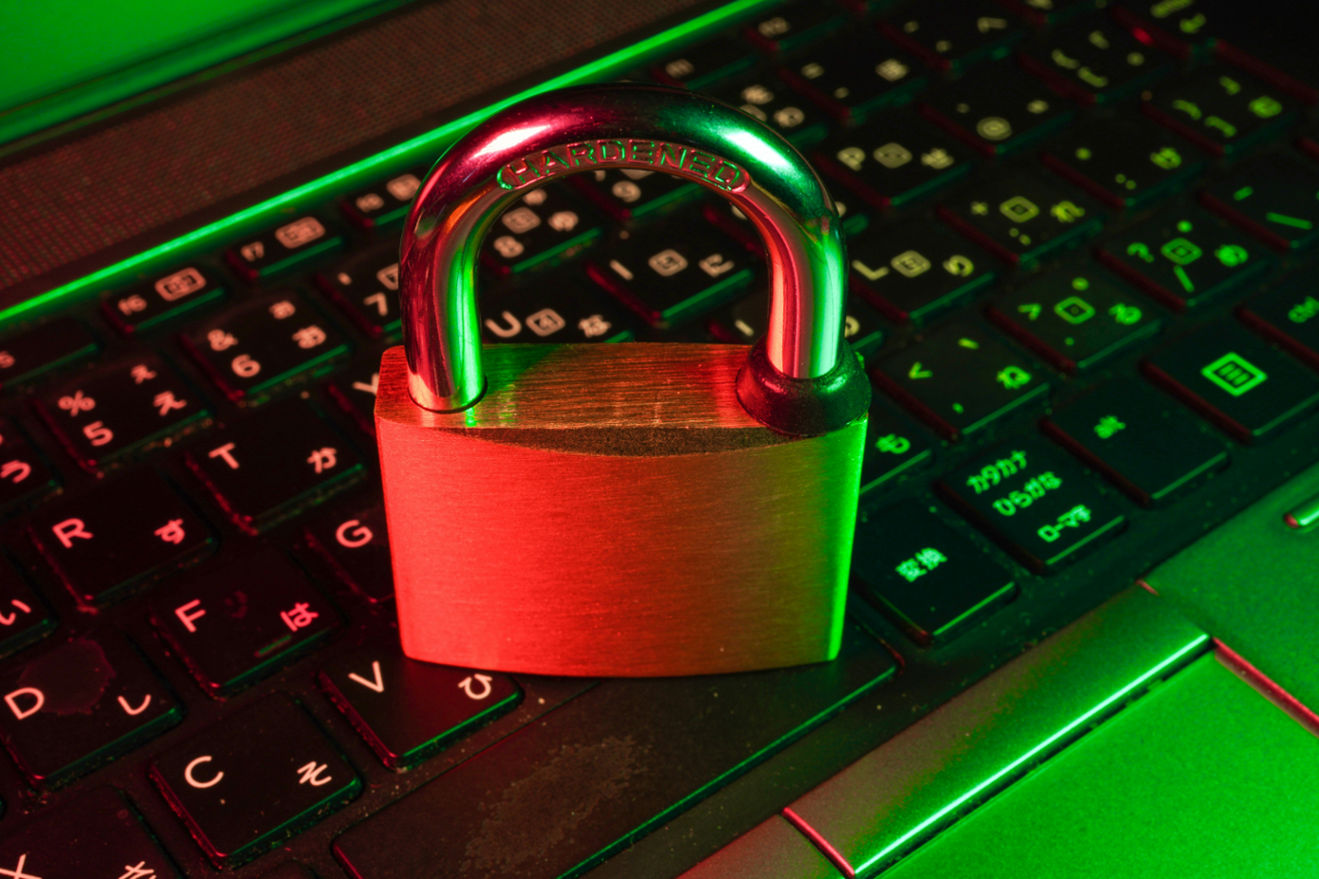 Security Updates
Security UpdatesImplement Secure Browsing with Powerful SSL Decryption
Explore the essentials of SSL decryption, its importance, challenges, and best practices for enhancing security and compliance for business in a detailed guide
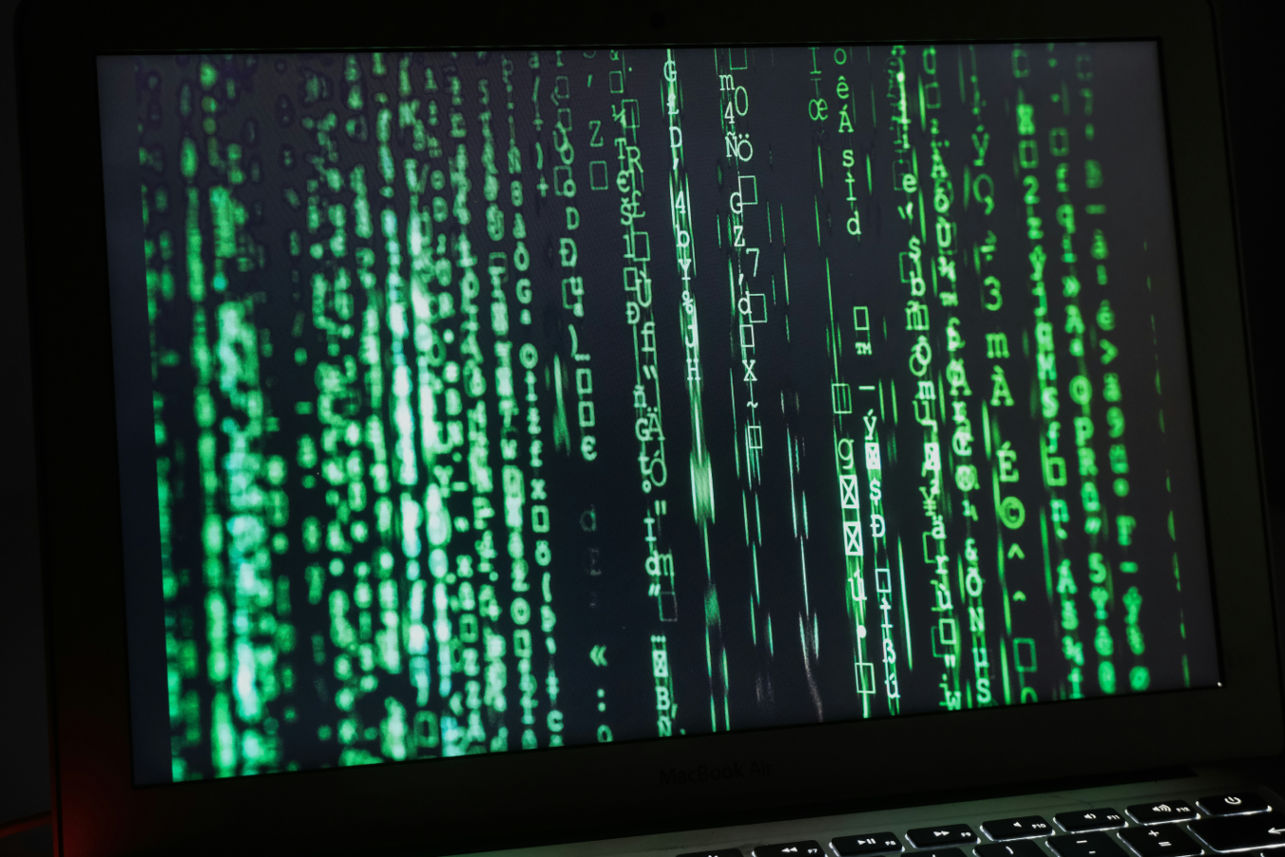 Security Updates
Security UpdatesTransitioning from Proxy Firewalls to Endpoint Security
Explore the evolution from proxy firewalls to endpoint security, enhanced threat detection, data encryption, and comprehensive protection for modern networks.
 Security Updates
Security UpdatesExpert IT Risk Assessment: Protect Your Business Today!
Mitigate potential IT threats with our comprehensive risk assessment guide, ensuring your digital infrastructure. Ensure your business is secure an...
 Security Updates
Security UpdatesEssential Guide to Best Practices in Compliance Security
Explore essential strategies for compliance security in this comprehensive guide. Learn about safeguarding your business and meeting regulatory sta...
 Security Updates
Security UpdatesSecure Your Data with Expert Cloud Database Solutions
Learn efficient solutions and secure your cloud databases with encryption and compliance features, ensuring data safety and privacy across all plat...
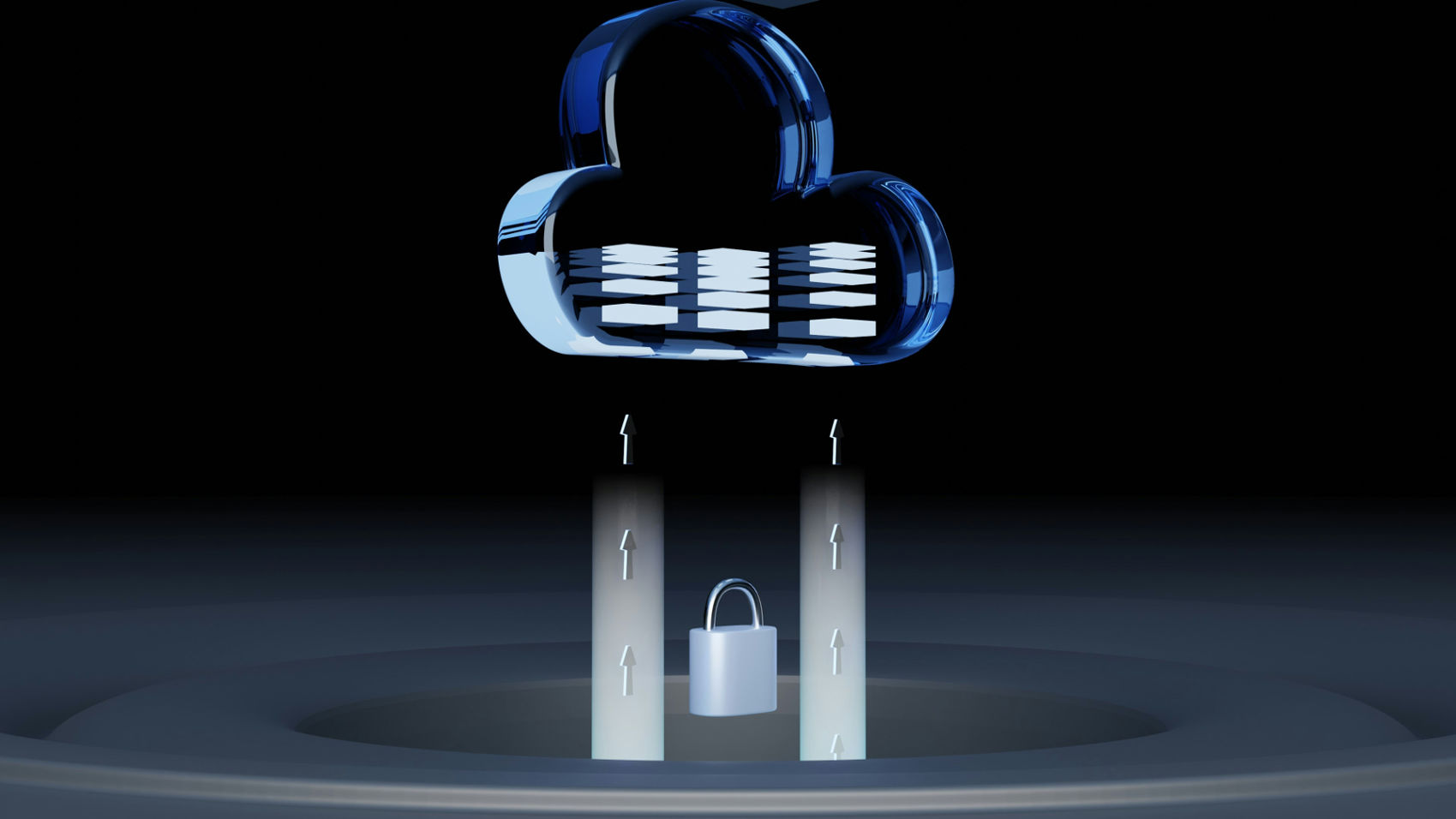 Security Updates
Security UpdatesA Guide to Cloud Network Technology: Benefits and Types
Unlock the potential of cloud network technology for seamless connectivity. Learn and scale solutions that drive business innovation and growth via...
 Security Updates
Security UpdatesAffordable Managed IT Services for Small Businesses
Explore top-managed IT services for small businesses to boost efficiency and security. Get expert insights and practical tips to optimize your IT o...
 Security Updates
Security UpdatesSecure Your Network with Gateway Security Solutions
Explore the essentials of gateway security: learn about its importance for network protection and best practices to safeguard your digital assets e...
 Security Updates
Security UpdatesDisaster Recovery Testing: Ensure Business Continuity
Explore effective disaster recovery testing strategies in this guide to maintain business continuity, prevent data loss, and minimize downtime duri...
 Security Updates
Security UpdatesMaximizing Security: Vulnerability Management Lifecycle
Explore the complete guide to the Vulnerability Management Lifecycle to boost your cyber resilience and secure your business IT infrastructure effe...
 Security Updates
Security UpdatesYour Network with Endpoint Security Management
Explore our comprehensive guide on Endpoint Security Management to understand its importance, how it works, and best practices for robust network s...
 Security Updates
Security UpdatesEnsuring Security Compliance: Tips, Insights & Strategies
Discover the essentials of security compliance, its importance, frameworks, and tools. Learn how to protect data and meet regulatory standards effe...
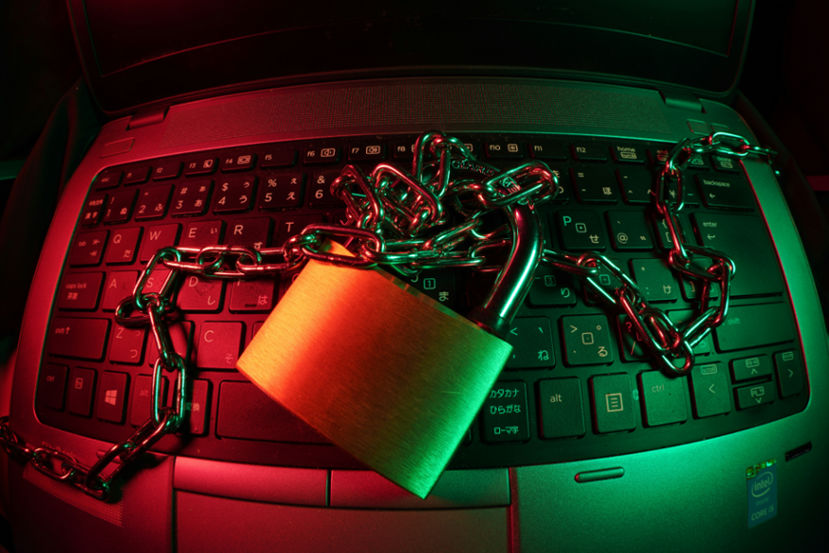 Security Updates
Security UpdatesBoost Your Security with Internal Penetration Testing
Dive into internal penetration testing with our in-depth guide. Learn the essentials, techniques, and best practices to fortify your cybersecurity ...
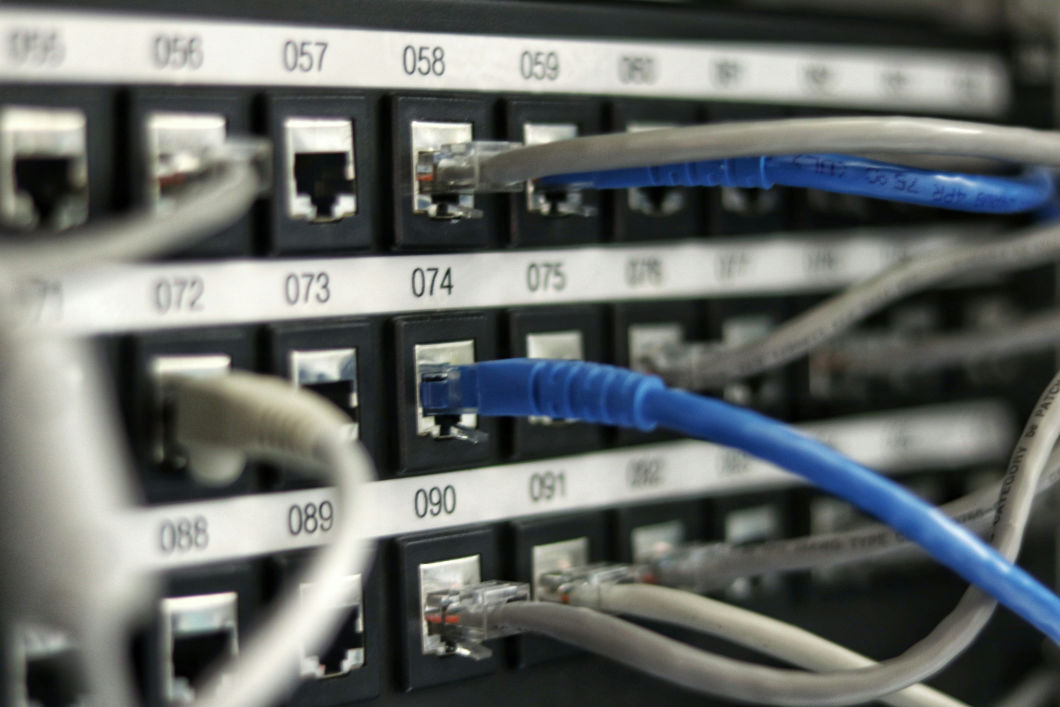 Security Updates
Security UpdatesEgress vs Ingress: A Guide to Data Traffic Management
Understand Egress vs Ingress in data management. Learn and explore their roles, traffic analysis, risks, and best practices for network and cloud s...
 Security Updates
Security UpdatesPrevent Credential Harvesting to Protect Your Precious Data
Understand credential harvesting. Learn how it works, common techniques, its impact, and strategies to prevent and mitigate attacks to secure your ...
 Security Updates
Security UpdatesSecure Your Big Data: Top Solutions for Data Security
Protect your valuable data with our robust big data security solutions. Learn about the threats and Safeguard against cyber threats and ensure comp...
 Security Updates
Security UpdatesSecure Your Network with Advanced Management Solutions
Explore the details of comprehensive network security management: Learn key strategies, best practices, and tools to safeguard your digital environ...
 Security Updates
Security UpdatesGuide to On-Path Attacks: Protecting Your Cybersecurity
Learn about on-path attacks in this comprehensive guide, exploring definitions, types, consequences, and key prevention strategies to safeguard you...
 Security Updates
Security UpdatesExploring Managed Cloud Services: A Comprehensive Guide
Dive into the Managed Cloud Services with our in-depth guide. Explore benefits, types, and best practices to enhance your business's cloud strategy...
 Security Updates
Security UpdatesComprehensive Guide to Ubiquitous Computing: Impact & Future
Explore the details of ubiquitous computing, from its core concepts and layers to its societal impact, key technologies, applications, and future p...
 Security Updates
Security UpdatesClone Phishing Explained: Detection and Prevention Guide
Discover how clone phishing works and its impact. Learn effective strategies to identify, prevent, and respond to these sophisticated email threats...
 Security Updates
Security UpdatesHow to Secure Your Business with Cyber Security Insurance
Explore the essentials of Cyber Security Insurance, covering its importance, types of coverage, benefits, and considerations for businesses in the ...
 Security Updates
Security UpdatesEfficient Data Spooling Solutions For Streamlined Operation
Learn How To Efficiently Manage And Store Your Data With Our Reliable Data Spooling Services. Keep Your Information Organized And Accessible With T...
 Security Updates
Security UpdatesMaximizing Compliance & Risk Management: Expert Strategies
Learn how to ensure business success with effective compliance and risk management strategies. Explore definitions, differences, frameworks, and ch...
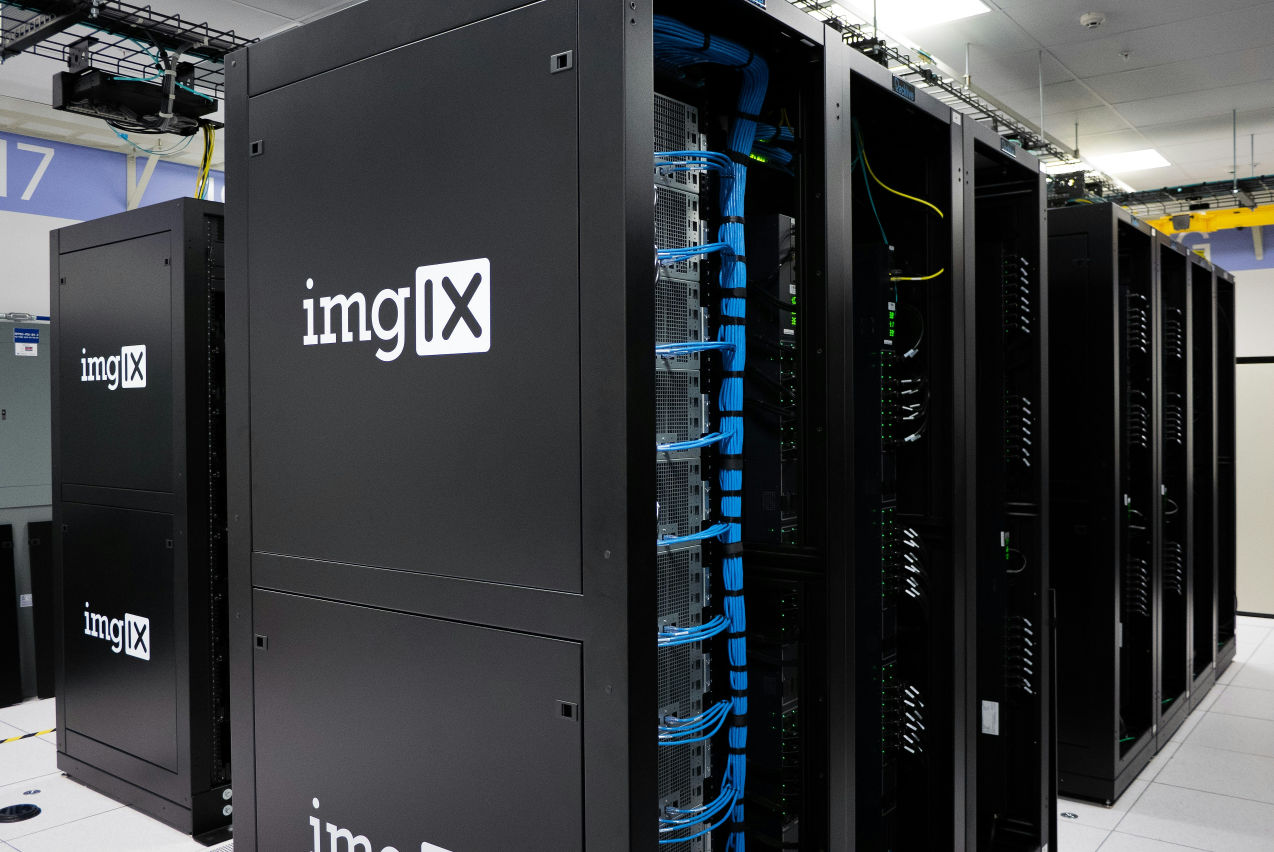 Security Updates
Security UpdatesUnderstanding MDF vs IDF: Key Differences & Benefits
Explore the crucial differences and examples between MDF and IDF in networking, understanding their roles, functions, and impact on network infrast...
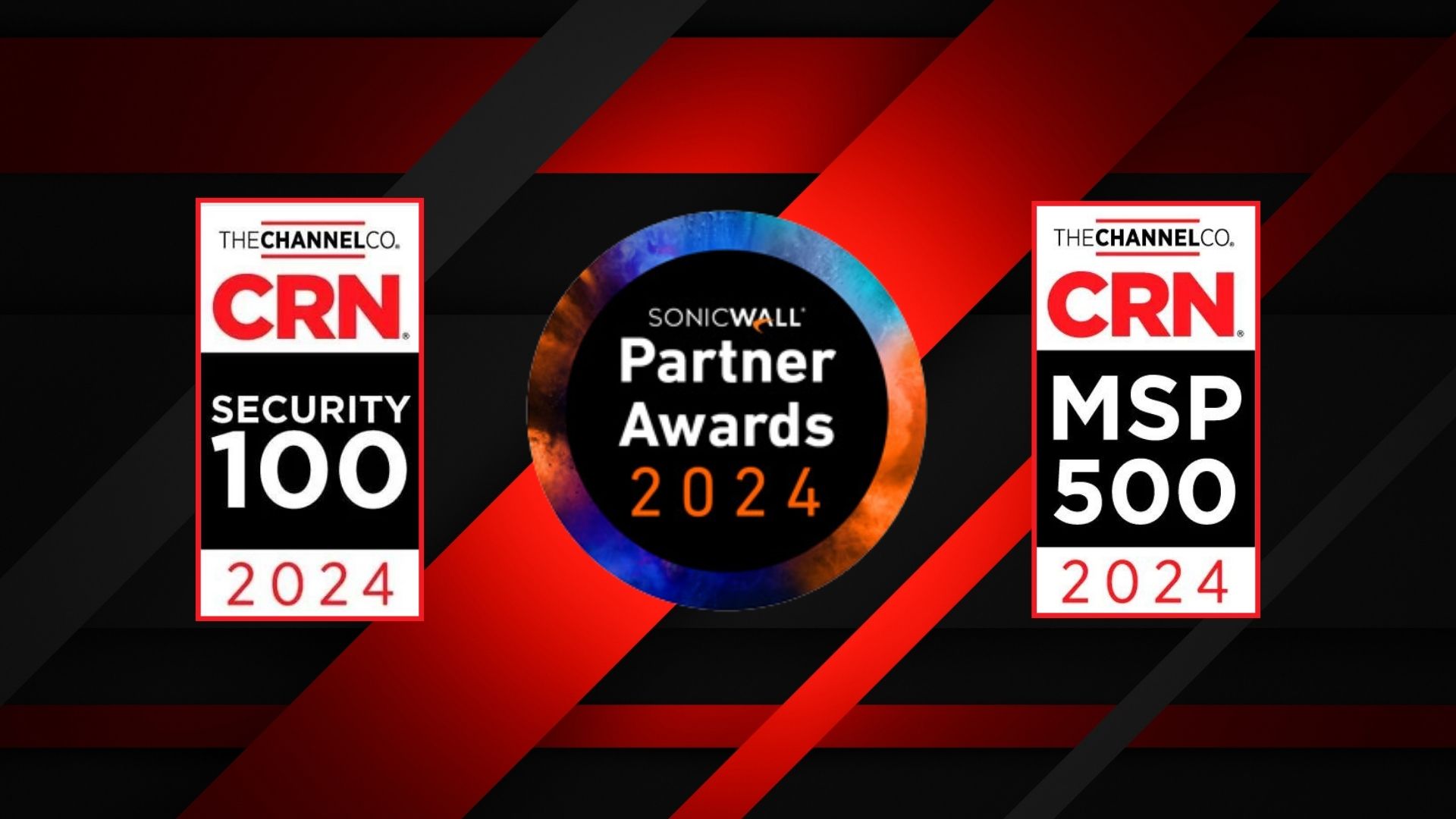 Security Updates
Security UpdatesRedZone Wins CRN's Top Security 100 & MSP 500 Awards 2024
RedZone Technologies earns CRN's Security 100 & MSP 500 Awards, affirming its leadership and innovative approach in the cybersecurity and IT manage...
 Security Updates
Security UpdatesJames Crifasi Speaks on Cybersecurity at Tech Conference
Join James Crifasi, CTO & COO of RedZone Technologies, at the Tech Conference as he explores cybersecurity's role in driving business growth and ad...
 Security Updates
Security UpdatesRedZone's James Crifasi Wins SonicWall's Technical Hero Award
CTO James Crifasi of RedZone Technologies earns SonicWall's Technical Hero of the Year, exemplifying unparalleled dedication to cybersecurity and I...
 Security Updates
Security UpdatesHow to Encrypt Email in Outlook
Learn how to encrypt email in Outlook with our step-by-step guide. Secure your messages using S/MIME, Office 365 Encryption OME, and add-ins for pr...
 Security Updates
Security UpdatesWhat Is Security Monitoring? Importance and Tools
Explore the importance of security monitoring, its key roles, types, and how it protects organizations against threats, ensuring compliance and pro...
 Security Updates
Security UpdatesServer 2012 R2 End of Life: Implications and Next Steps
Learn about Server 2012 R2 end of life: Understand its impact, key dates, risks post-EOL, and explore upgrade options and migration strategies for ...
 Security Updates
Security UpdatesProtect Personal Data: Smishing and Phishing Prevention
Know how to identify and protect against smishing and phishing attacks. Learn the techniques, types, and preventive measures for personal and busin...
 Security Updates
Security UpdatesSmurf Attack Guide: Prevention & Detection Strategies
Explore prevention & recovery from Smurf Attacks: Understand DDoS defense, detection signs, and secure network practices in our detailed cybersecur...
 Security Updates
Security UpdatesWhat is a Bad USB Attack, and How Do You Prevent It?
Learn about Bad USB attacks, their various forms, and strategies for safeguarding devices. Learn how to mitigate risks with effective prevention te...
 Security Updates
Security UpdatesKey Differences Between DOS Attack vs DDOS Attack
Explore the key differences between DDoS vs DoS attacks, their types, impacts, and prevention strategies in our comprehensive guide to enhance cybe...
 Security Updates
Security UpdatesUnderstanding the Impact of a Ping of Death Attack
Explore the ins and outs of Ping of Death attacks. Understand how they work, their impact on networks, and strategies to prevent them to keep your ...
 Security Updates
Security UpdatesThe Power of the Human Firewall: Your First Line of Defense
Discover the critical role of the human firewall in cybersecurity, combining employee vigilance with technology to protect against cyber threats ef...
 Security Updates
Security UpdatesStateful Firewall vs. Stateless Firewalls: What's the Difference?
Learn the key differences between stateful and stateless firewalls and how they protect your network. Discover the right choice for your security n...
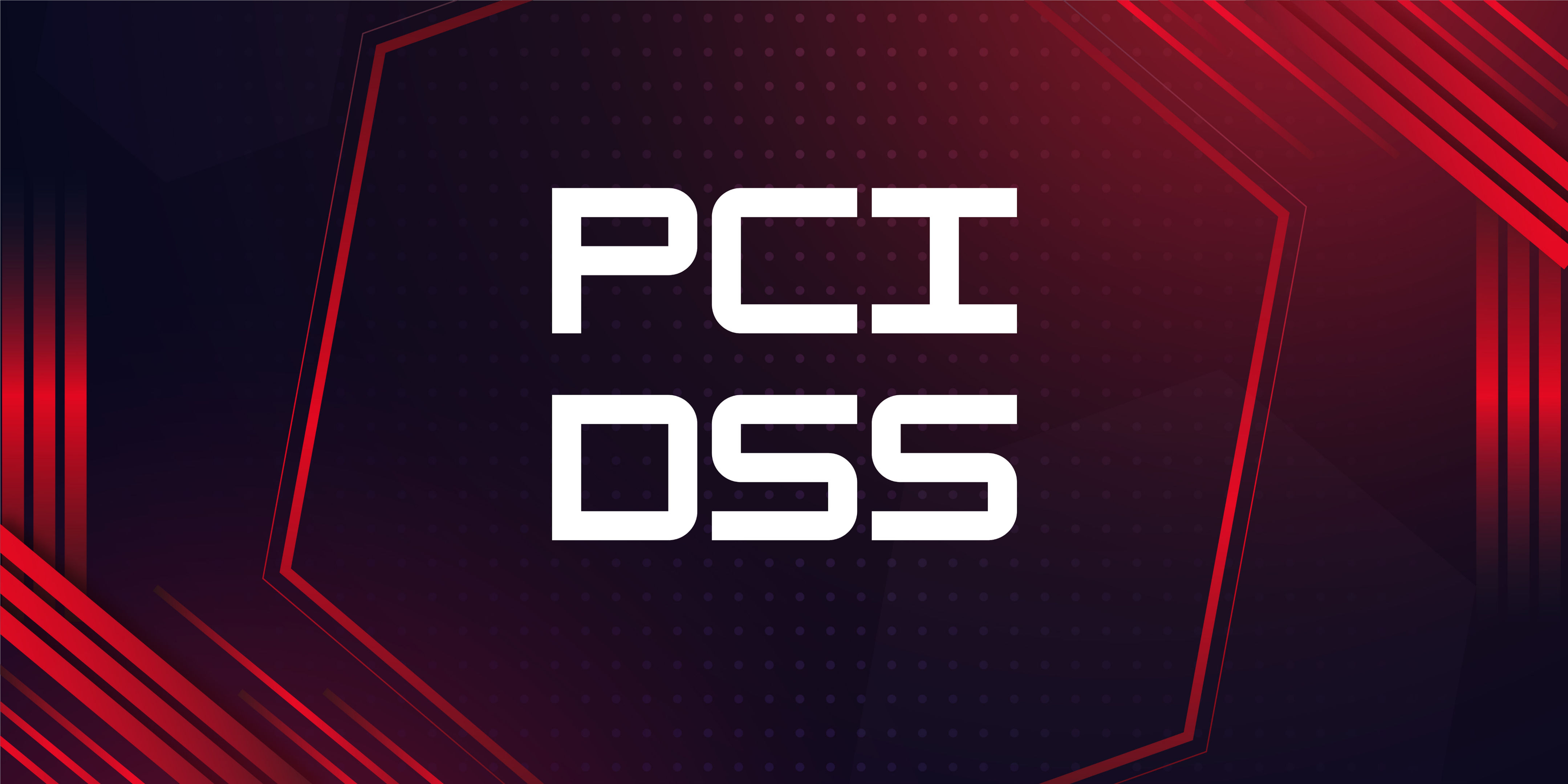 Security Updates
Security UpdatesUnderstanding the 4 Levels of PCI Compliance
Explore PCI DSS Compliance with RedZone: Key steps to protect card data and ensure secure transactions. Learn about compliance levels and tips for ...
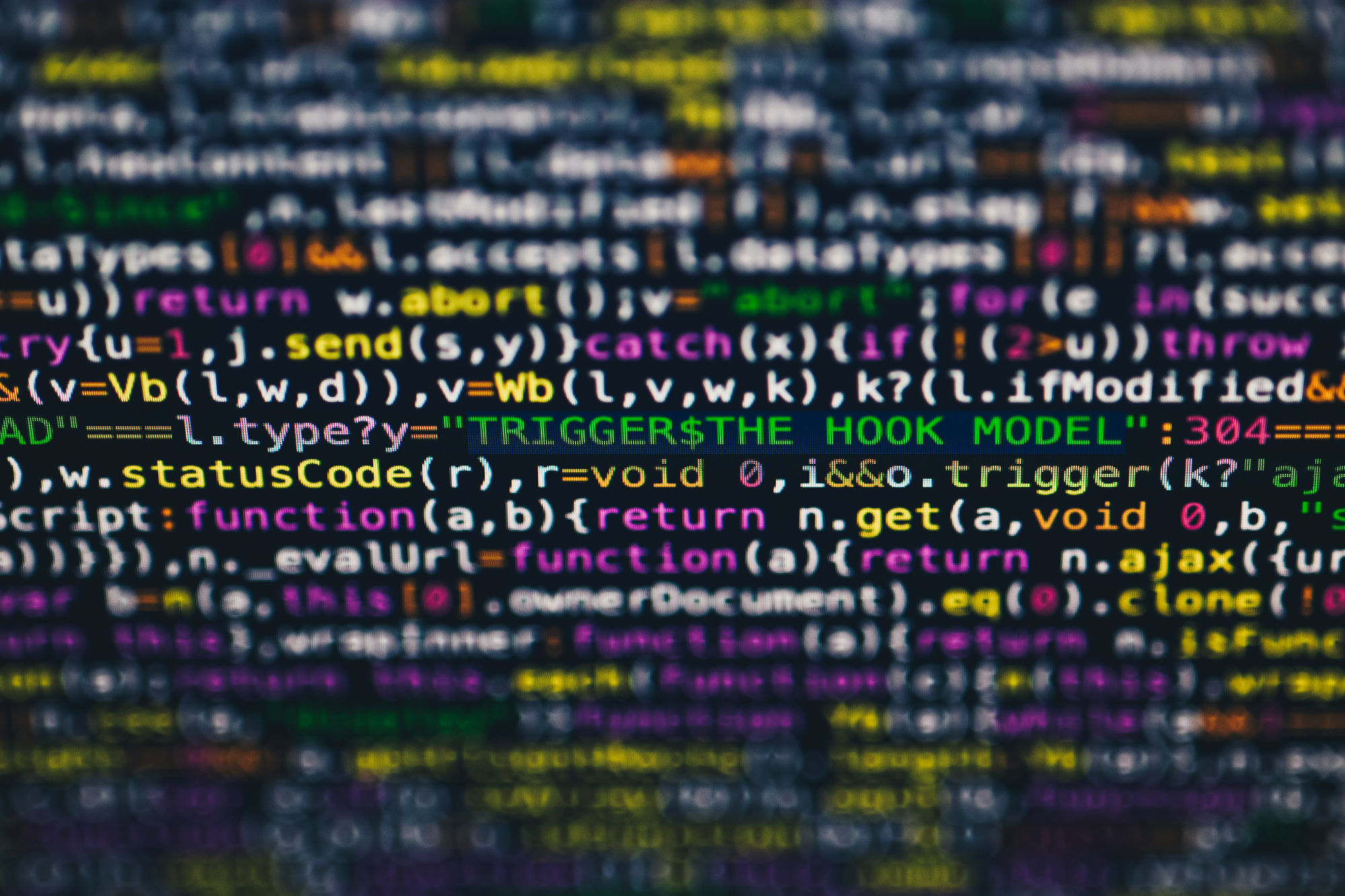 Security Updates
Security UpdatesWhat Is a Security Breach and How to Prevent Them
Learn how to effectively guard your business against security breaches with RedZone Technologies. Discover simple steps to keep your data safe and ...
 Security Updates
Security UpdatesUnderstanding Tailgating in Cybersecurity
Understand tailgating attacks in cybersecurity: what they are, how they work, and effective strategies for prevention to keep your business...
 Security Updates
Security UpdatesWhat is a Managed Service Provider and Its Benefits
Explore the role of Managed Service Providers (MSPs) in enhancing IT efficiency and cybersecurity for businesses, covering benefits, servi...
 Security Updates
Security UpdatesBreach Prevention: 5 Best Practices to Protect Your Data
Learn about data breaches: what they are, their impact, and how to prevent them. Explore best practices for securing your business against cyber th...






